
It was sheer desperation on the part of the Congress - and a fair amount on the part of the Left - that brought them together in a poll alliance in Bengal.
For the Congress, it was a matter of survival, of keeping together whatever was left of its flock. For the Left, particularly the CPI(M), the alliance was a means of notching up a respectable number in the election, and getting back in the game. Unwilling to go back to basics and work on reviving its cadre base, the CPI(M) rushed to team up with the Congress, only to be debilitated further.
Read- West Bengal election results 2016: TMC supporters allegedly vandalise CPI(M) office
The irony is that while the alliance has boomeranged on the Left, it has strengthened the Congress. Dislodging its ally, the Congress has moved up to second in the political hierarchy in the state. That the Left has lost even more ground in this election is a telling comment on the quality of leadership of the CPI(M)'s state committee as well as its national general secretary Sitaram Yechury in devising the poll strategy.
From the outset, the tactical Left-Congress tie-up, given West Bengal's history of bitter and bloody relations between the two parties, was not a "natural alliance". Behind this clumsily-crafted arrangement was CPI(M)'s inability during the last five years to come to terms with losing power after over three decades. Where it could have played the role of a credible opposition, the Left retreated into the pavilion and stayed there.
This passive political withdrawal was all the more inexplicable given that Chief Minister Mamata Banerjee handed them issues on a platter - from the Saradha scam to the Park Street rape case, and the incessant bloody factional fights disrupting peace in the state. However, the Left consistently remained in the background, unable, seemingly for lack of energy, to capitalise on any of these issues.
The Congress, meanwhile, thrashed about trying in vain to stem defections of its legislators and rank and file to the ruling TMC. The Left parties too had to battle desertion of cadres, to the TMC and sometimes even the BJP. But the Congress faced a crisis fundamental to its existence as a political entity. Within two years of the 2011 assembly polls, nine of its sitting MLAs quit and joined the TMC, considerably whittling down the party's seat tally.
It's not that tactical seat-adjustment among "unnatural" allies is unknown in electoral politics. But the processes that lead to the firming up of the alliance are crucial to their durability or efficacy. For instance, barring the last-minute joint election rallies at which former chief minister Buddhadeb Bhattacharjee of the CPI(M) and Congress vice president Rahul Gandhi were suddenly seen holding hands, the Congress and the Left Front didn't participate in any joint opposition activity over the last five years. This alliance was motivated only by a cynical calculation of potential seat numbers.
A question then hangs on the future of this alliance in Bengal, particularly when Banerjee has not only retained power but also notched up an impressive number of seats on her own. On the ground, relations between CPI(M) and Congress workers will remain fraught. The jury is out on whether the alliance will survive in the post-poll context. Besides, given its record of scams and increasing electoral insignificance nationally, the Congress can hardly be considered a political asset.
The CPI(M) committed the folly of equating Banerjee's regime with the central government led by Narendra Modi. There has been a great deal of talk in Bengal's Left political circles of an alliance - covert or overt - between the BJP and the TMC for the 2019 general election. References are repeatedly made to TMC's earlier alliance with the BJP during Atal Bihari Vajpayee's prime ministership.
But the shrewd politician that Banerjee is, she made it clear at a press conference today that her party will have no truck with the BJP in the coming days. The TMC chief is aware of the serious differences that set apart Vajpayee's leadership from Modi's. Equally, she is attuned to the deeply polarising climate in the country at present. Given Bengal's demographic break up - for example, its 27 % Muslim population - it would be electorally suicidal for Banerjee to team up with a communally aggressive BJP.
Also read- Cyclone Mamata: why Bengal brought her back with a bigger mandate
The Left needs to move beyond such flimsy rhetoric and take up serious issues on which the TMC can and should be challenged. This won't be easy as the CPI(M) is crippled by legacy issues. For one, the systemic political violence the TMC has unleashed is but a continuation of CPI(M)'s tactics. The Left party's use of violence to acquire land for corporates in Nandigram and Singur is part of Bengal's collective memory - a memory Banerjee will try her best to keep alive.
The Left will need to re-invent itself if it wants to reclaim its space in West Bengal. Most people in the state remain deeply critical as well as suspicious of the CPI(M) and its ruthless party politics. The statements emanating from Alimuddin Street in Kolkata or AK Gopalan Bhawan in Delhi since the 2011 defeat have hardly inspired confidence in the Left's introspection, if there has been any at all, that is. That Buddhadeb, in his campaign rallies, aggressively defended his industrialisation policies suggests that no lessons have been learnt.
The Left's unseemly hurry to somehow jostle its way back into prominence, not just in the state but also at the national level, has shows an utter deficit of political sincerity. Besides, the TMC has clearly stolen a march in both these spaces.
Given its lack of numbers in the parliament, the Left cannot expect to reclaim the position of eminence it once had in policy-making or strategising. In 1996 and again in 2004, the Left was the pivot of an anti-BJP, anti-Congress third front. Now that space is likely to be filled by Banerjee. The hostile relations between TMC and the Left - particularly after the latter's alliance debacle with the Congress - preclude any possibility of the two camps sharing a common political space.
More in Catch:
Trump may not love China, but the Chinese internet sure loves him
The bare truth: mass nude photographer set to expose Trump's politics
India's shame: Bundelkhand woman eats mud for 12 years to survive
Fake lawyers: crooks in black coats face Supreme Court crackdown
First published: 19 May 2016, 5:08 IST

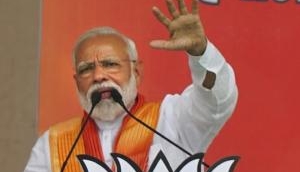
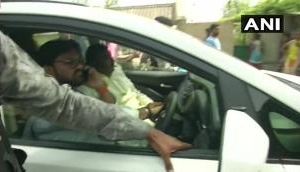
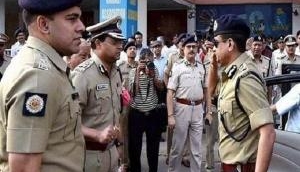
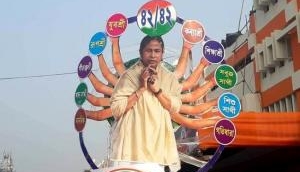
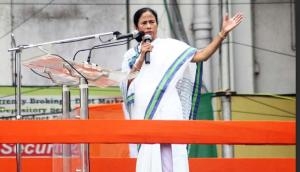
![BJP's Kapil Mishra recreates Shankar Mahadevan’s ‘Breathless’ song to highlight Delhi pollution [WATCH] BJP's Kapil Mishra recreates Shankar Mahadevan’s ‘Breathless’ song to highlight Delhi pollution [WATCH]](https://images.catchnews.com/upload/2022/11/03/kapil-mishra_240884_300x172.png)

![Anupam Kher shares pictures of his toned body on 67th birthday [MUST SEE] Anupam Kher shares pictures of his toned body on 67th birthday [MUST SEE]](https://images.catchnews.com/upload/2022/03/07/Anupam_kher_231145_300x172.jpg)






